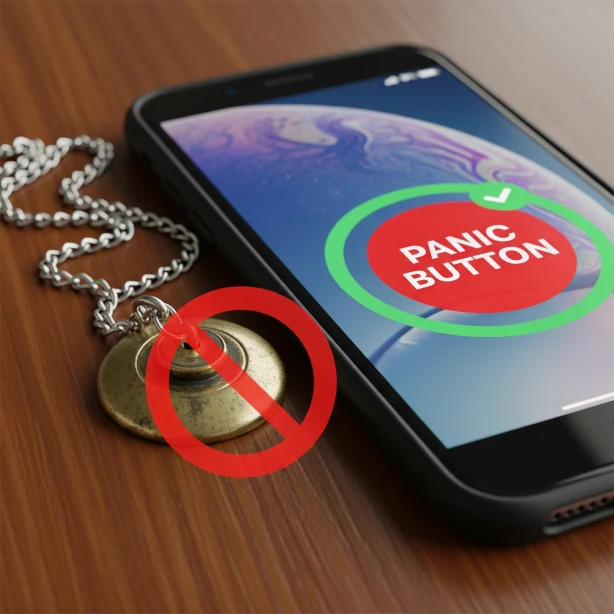Video Panic Button: How Schools Can Leverage Existing Equipment to Boost Safety and Save Money

In an age where school safety is a top priority, administrators face a challenging balance: implementing advanced security features without breaking the budget. One powerful solution that strikes this balance is the video panic button — especially when it’s designed to work with existing security equipment.
By leveraging what’s already installed, schools can avoid costly overhauls while still adding a high-impact safety feature that integrates seamlessly into daily operations.
What Is a Video Panic Button?
A video panic button is an emergency alert system that does more than just sound an alarm — it instantly connects security cameras to law enforcement or designated staff when activated. This means responders don’t just know that an incident is happening; they can see the situation in real time.
Traditional panic buttons send out an audio or text alert. A video panic button pairs that alert with live camera feeds, giving responders a tactical advantage.
Why Using Existing Equipment Makes Sense
Most schools already have some form of CCTV security camera network and an intercom or alert system. A video panic button system can often integrate with this infrastructure, saving thousands in hardware and installation costs.
Advantages of integration:
Lower costs — No need to rip out and replace functional cameras or cabling.
Faster implementation — Integration projects can be completed in weeks, not months.
Minimal disruption — Less drilling, rewiring, and downtime for classrooms.
Staff familiarity — Teachers and administrators already know how to use the existing camera system.
How It Works
When someone presses the video panic button — either a physical device or a software button on a desktop/mobile app — the system sends an immediate alert to predetermined recipients. At the same time:
The nearest camera feeds are pushed to law enforcement or security personnel.
The system can trigger door locks, PA announcements, or strobe lights if configured.
Incident data (time, location, camera IDs) is logged for post-event review.
Cost Savings in Action
Instead of purchasing a whole new proprietary system, schools can:
Install a small number of panic button triggers throughout the campus.
Use existing cameras and network infrastructure.
Connect the panic button system to the same monitoring platform already in use.
A typical full-replacement system could run $50,000+ for a medium-sized campus. A well-planned integration with existing equipment could be implemented for a fraction of that cost — sometimes under $10,000.
Choosing the Right Integration Partner
To maximize savings and efficiency, look for:
Vendor-agnostic solutions — Works with multiple camera brands and existing VMS (video management software).
NG911 compatibility — Ensures law enforcement can receive video directly within Next Generation 911 systems.
Scalable architecture — Easy to expand as needs change.
Training and support — So staff can operate it confidently during high-stress situations.
Training Is Key
Even the best system is only effective if staff know how and when to use it. Training sessions should cover:
How to trigger the video panic button.
What happens immediately after activation.
How to communicate with law enforcement while video is streaming.
Post-incident procedures.
Beyond Active Threats
While most people associate panic buttons with active shooter scenarios, they can also be used for:
Medical emergencies.
Severe weather alerts.
Fights or disturbances on campus.
Visitor management issues.
This versatility means the investment pays off in multiple ways.
Final Thoughts
By integrating a video panic button into your school’s existing security infrastructure, you can dramatically enhance emergency response capabilities without overspending. It’s a budget-friendly, high-impact upgrade that transforms a standard camera network into a proactive, real-time safety system.
Safety doesn’t always mean starting from scratch — sometimes the smartest move is making the most of what you already have.
